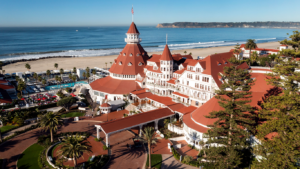The image the word tourism often brings to mind is of fun, sun, and beautiful destinations and resorts. But with the industry under siege last year, those who work in the sector here in Arizona decided it was time to give tourism a new face — that of a relative, a friend, a neighbor, someone you know, even you.
In 2009, the tourism industry across the nation was hit by the recession and the fevered backlash against corporations that had received billions of dollars in taxpayer bailout money. To those in tourism, this became know as the “AIG effect,” so-called because the foundering insurance giant went ahead with lavish retreats after getting an initial $85 billion bailout in September 2008 under the federal government’s Troubled Asset Relief Program (TARP). The Valley became connected to the controversy when ABC News reported in November 2008 that AIG had spent more than $340,000 on an event at an area resort. AIG countered that the event was not a corporate retreat, but rather a conference for independent financial advisers. But the damage was done.
“For us, to be in a destination that just happens to be lovely, that just happens to have nice weather, that happens to have those beautiful structures that are really good at providing a great amount of business opportunities inside them in the form of meetings — we got really hit,” says Rachel Sacco, president and CEO of the Scottsdale Convention and Visitors Bureau.
The result was plunging occupancy rates, declining tax revenues, curtailed employee hours and even layoffs at Valley resorts and hotels.
In an effort to diffuse the hostility, the U.S. Tourism Association began a Face of Tourism media campaign to spotlight the people who were directly hurt by corporations canceling all manner of events — the millions who work in the tourism and hospitality industry. Over the past summer, the various players in the state’s tourism industry, including the Arizona Tourism Alliance, joined forces to launch the Face of Arizona Tourism campaign.
“The Face of Arizona Tourism campaign was really about trying to make sure that there is an understanding of how personal this industry is,” Sacco says. “ … it’s people at all different levels that are doing work that is meaningful and important, and frankly is their livelihood. I think the campaign was really successful to see that there is a face, that I might even know that face, and I might even be that face.”
The person selected to embody the Face of Arizona Tourism campaign is Mia Yates, a banquet server at the Westin Kierland Resort & Spa in Scottsdale.
“My story is this is my full-time job, working in the banquet department at the Westin, and I’m a single mom with three children.” Yates says. “When businesses stopped coming to Arizona, and more specifically the Westin, my hours were affected. They don’t need me to work, so I don’t work, I’m unable to hold onto my health benefits that allow my children to go to the doctors. I guess the Westin felt that I had a story. I was pretty close to the average working bear.”
Yates acknowledges that the Westin weathered the worst of the downturn better than other resorts, and she credits the efforts of management to look after its employees.
“They opened up positions around the resort and allowed us to cross train to help us keep our hours,” she says. “We only had to do that during the summer months, and pretty much we’ve been back up to nice hours in the banquet department.”
Bruce Lange, managing director of the Westin Kierland, says getting out Yates’ story — and all the others she symbolizes — was critical in short-circuiting the AIG effect.
“I’m absolutely certain we reacquainted our elected officials with where the rhetoric was hurting our economy, specifically if you know that one out of every eight people in the nation is engaged in the industry called tourism,” Lange says. “We are able to put the faces of the Mia Yates of the world and say, ‘Here’s your victim. Your intended victim may be the CEOs of those organizations, but here is where it’s really coming home to roost.’ I’m absolutely certain it’s had a positive impact.”
As a result of the recession and the AIG effect, Lange says the Westin Kierland’s business was off 25 percent in 2009 as compared to 2008. But the numbers only tell part of the story.
“If I tell you that our business is off 25 percent and we send, from a tax revenue standpoint, to state and local government $12,000 a day, is that impactful?” Lange asks. “Or is it more impactful for me to say that our average employment is about 1,000 people and if we’re down 25 percent we have 25 percent fewer folks? I think where the rubber meets the road is the human aspect much more so than the statistical aspect.”
Sacco adds that it’s important to educate the public as a whole about how hard times in the tourism industry have a far-reaching effect.
“The impact tourism had of losing hundreds of millions of dollars in our community gets back to the Face of Tourism, because when you start losing money and business, it hurts that face of tourism, it hurts the small business that isn’t getting all of the trickle-down impact, it hurts all the galleries that have closed,” she says. “It didn’t just hurt people in the tourism industry.”
www.scottsdalecvb.com | www.kierlandresort.com



